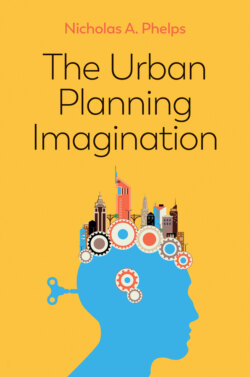Читать книгу The Urban Planning Imagination - Nicholas A. Phelps - Страница 20
States
ОглавлениеLocal and national states and the interstate system can be considered a third set of distinctly modern urban planning actors. Although ‘the act of conscious town building … has extended over millennia … Town planning … was different, resting as it did on notions of extension of public control over private interest in land and property’ (Cherry, 1996: 17). Statutory urban planning – the legally prescribed processes by which plans are enabled, made, revised and subject to scrutiny, appeal and enforcement – has a power that the planning of citizens and clubs can rarely match. Although full of unintended and unanticipated consequences, urban planning by states has become indispensable to the continued functioning of capitalism (Scott and Roweis, 1977); so much so that it is statutory planning that we most associate with urban planning. Urban planning in this incarnation expanded its remit from one of ameliorating the worst excesses of citizen and club planning – as a protector of the commons and of the ‘public interest’ – to the point where its basis in private property rights has become obscured (Blomley, 2017).
Nation states are a recent form of societal organization, dating to the Treaty of Westphalia in 1648, but statutory urban planning itself took another two and a half centuries to become a distinct and important activity. Much of the repertoire of urban planning taught in planning schools pertains to the unique moment (Graham and Marvin, 2000) – a mere century and a half – in which states have assumed much of the regulatory and visionary burden of urban planning. Nation states ‘see’ from above (Scott, 2000) whether building new capital cities (such as Brazilia) or demolishing, redeveloping or extending existing cities.
However, even within this short history of statutory urban planning, different historical and geographical vantage points make it a difficult enterprise to generalize about. The early ‘experimental’ urban planning undertaken in the name of empires was one of brutal theft and segregation. Yet it was also invested with some nobler aspirations that have today been lost. In the improvement works undertaken in colonial cities, for example, ‘the term “trust” carried with it an implied association with the public good rather than private profit making. Later … in the twentieth century, it was supplanted by the terms “board”, “corporation” or “authority”, although the functions remained similar’ (Home, 2013: 84).
Where once, in the global north, statutory urban planning was central to the building of new societies and commanded popular and political support, its value is now questioned. Even so, the inability of some nation states to exert authority and provide security over their territories often plays into poor urban planning outcomes. In some African nations the state has been absent from knitting together the self-building of citizens and the limited publics of club communities with any residual sense of the public interest (Parnell, 2018). Thus, familiar aspects of statutory urban planning remain on the agendas of supranational bodies such as the European Union (EU), international interstate organizations such as the UN, and innumerable non-governmental organizations (NGOs) that feed off the international interstate system.
Contrasts can be drawn among national planning systems and cultures which reveal some of the global diversity of statutory urban planning and citizen and club engagements with it (chapter 6). Equally, it can be invidious to apply labels to nations, especially when these speak with language issuing largely from the global north.
